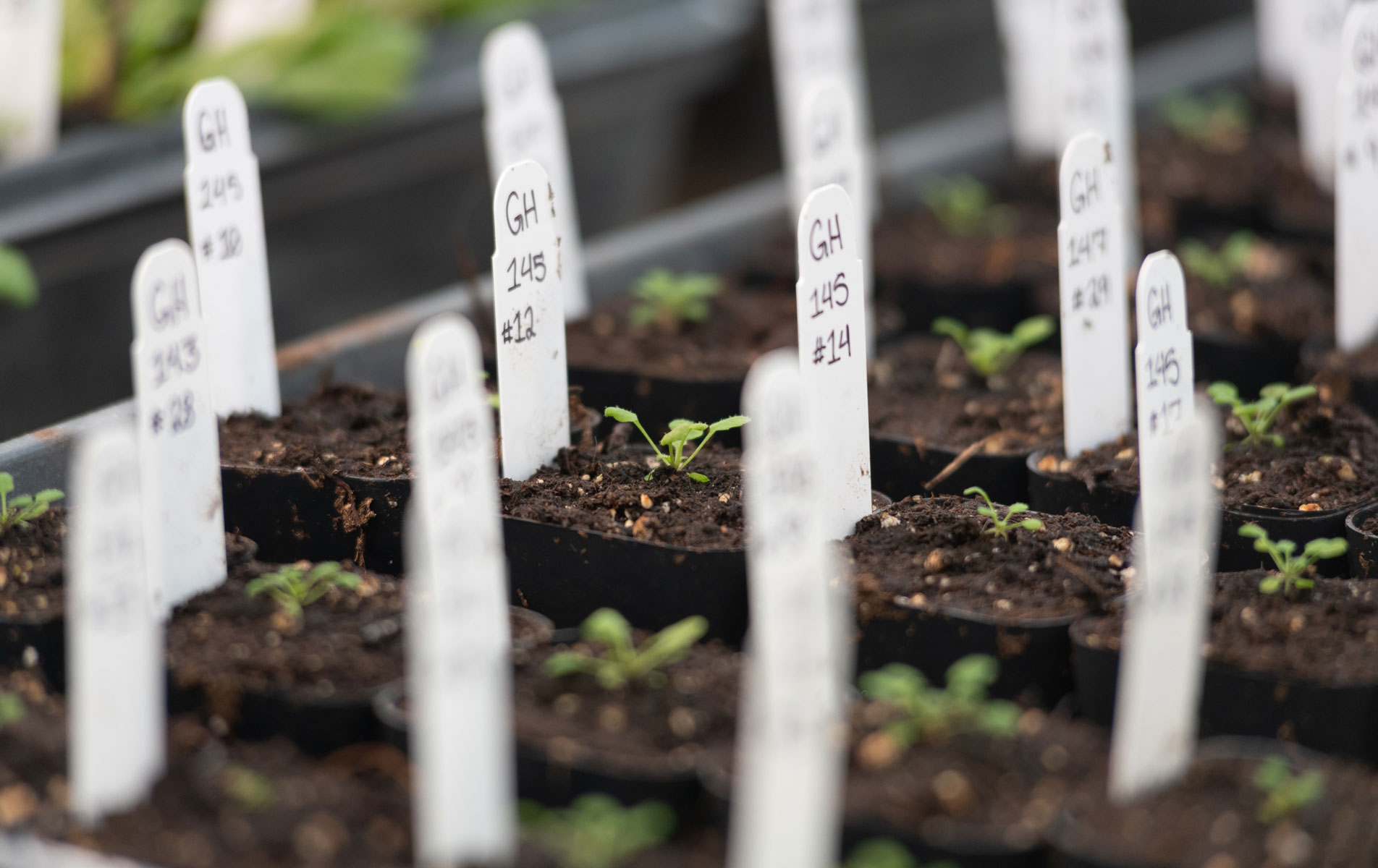
When it comes to essential minerals for people, plants, and animals, calcium is king.
Calcium is an essential component of cell walls and most organelles for fungi and plants and is vital for healthy teeth and bones for most vertebrates. In addition, the free ionic form of Calcium (Ca2+) acts as an important signaling agent that plays a role in essentially all aspects of eukaryotic life, including cell growth, immune responses, and nerve actions.
Recent research led by Sheng Luan, a professor in the Department of Plant and Microbial Biology, offers new insights into the important role calcium signaling plays in plant physiology. The studies, which were published in Nature Plants and Nature, shed further light on how plants code and decode calcium signals to manage biotic stressors ranging from herbivores and microorganisms to abiotic stressors like drought and extreme heat.
“While calcium is a ubiquitous messenger, past research has established that any external stressor results in a specific calcium change within the plant,” explained Luan, who has studied plant signaling for the last two decades. “Once the plant interprets change, it comes up with an appropriate response. Calcium is kind of like a molecular fire alarm.”
In January, Luan reported new findings relating to the long-distance transmission of wound signals within Arabidopsis thaliana that could improve insect and herbivore defense in plants. Despite lacking a formal nervous system, plants are able to “feel the pain” of being eaten or bitten when a calcium wave travels through the remaining vasculature. In response, the plant begins accumulating a defense hormone at other distal sites to prepare for future damage.
According to Luan, the researchers were able to use the CRISPR genetic engineering tool to target and engineer the specific gene that governs this response, improving anti-herbivore defense without impairing plant growth under normal conditions.
At the end of February, Luan’s lab reported the discovery of two new signaling pathways in Arabidopsis that are responsible for balancing calcium concentration within plant cells. Like in response to damage from herbivores, calcium signaling is also a key component of a plant’s immune response to disease-causing pathogens. While higher calcium concentrations could help a plant better ward off disease, it inhibits other functions, including growth. Similarly, low calcium concentrations could suppress immune function to levels where the plant cannot mount a sufficient response.
Luan said the new study—which was led by first authors Chao Wang and Renjie Tang, both project scientists in Luan’s lab, and co-authored by Kenda Rauscher, BS ’23 Genetics & Plant Biology, and Angela Voelker, BS ’23 Molecular Environmental Biology—builds on a 2019 paper that first detailed how calcium signals and their immunity-conferring receptors interact during plant disease development.
These pathways have the potential to be manipulated to improve plant responses to drought and extreme temperatures.
“Our fundamental understanding of this signaling mechanics will have very important implications for plant response to climate change,” he said. “It’s a future direction we're moving into.”
Read full copies of the papers in Nature Plants and Nature, and watch a video explaining the new signaling pathways produced by Volcker and Wang.
